Geoheritage at the Equator: Selected Geosites of São Tomé Island (Cameron Line, Central Africa)
Abstract
:1. Introduction
2. Geological Setting and Geosites Selection

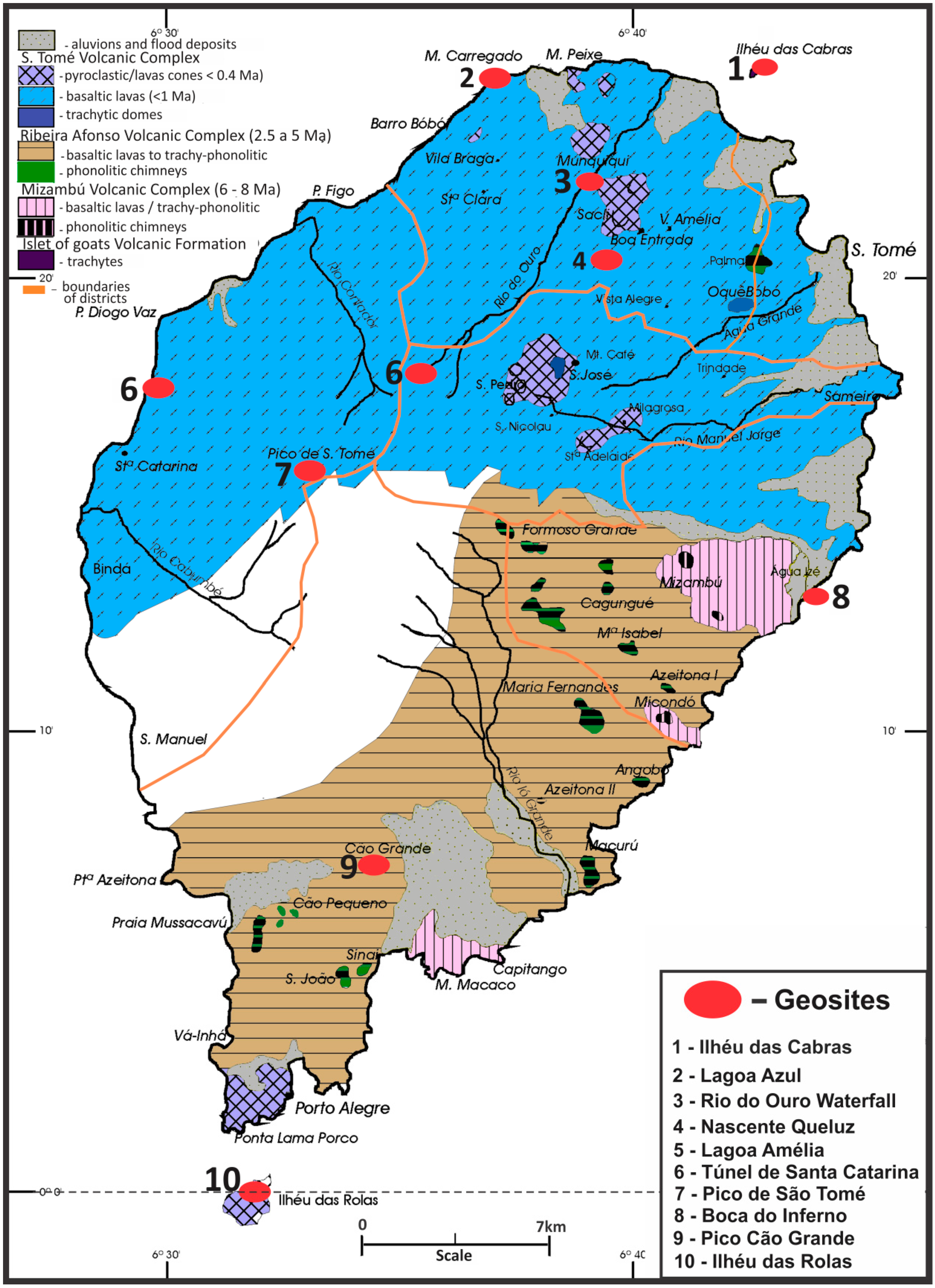
3. Results and Discussion
| Geosites | Type of Geoheritage |
|---|---|
| Geomorphological; Volcanological |
| Volcanological |
| Geomorphological; Volcanological |
| Geomorphological; Volcanological |
| Hydrogeological |
| Geomorphological; Volcanological |
| Geomorphological; Volcanological |
| Volcanological |
| Volcanological |
| Geomorphological; Volcanological |
3.1. Cascata do Rio do Ouro
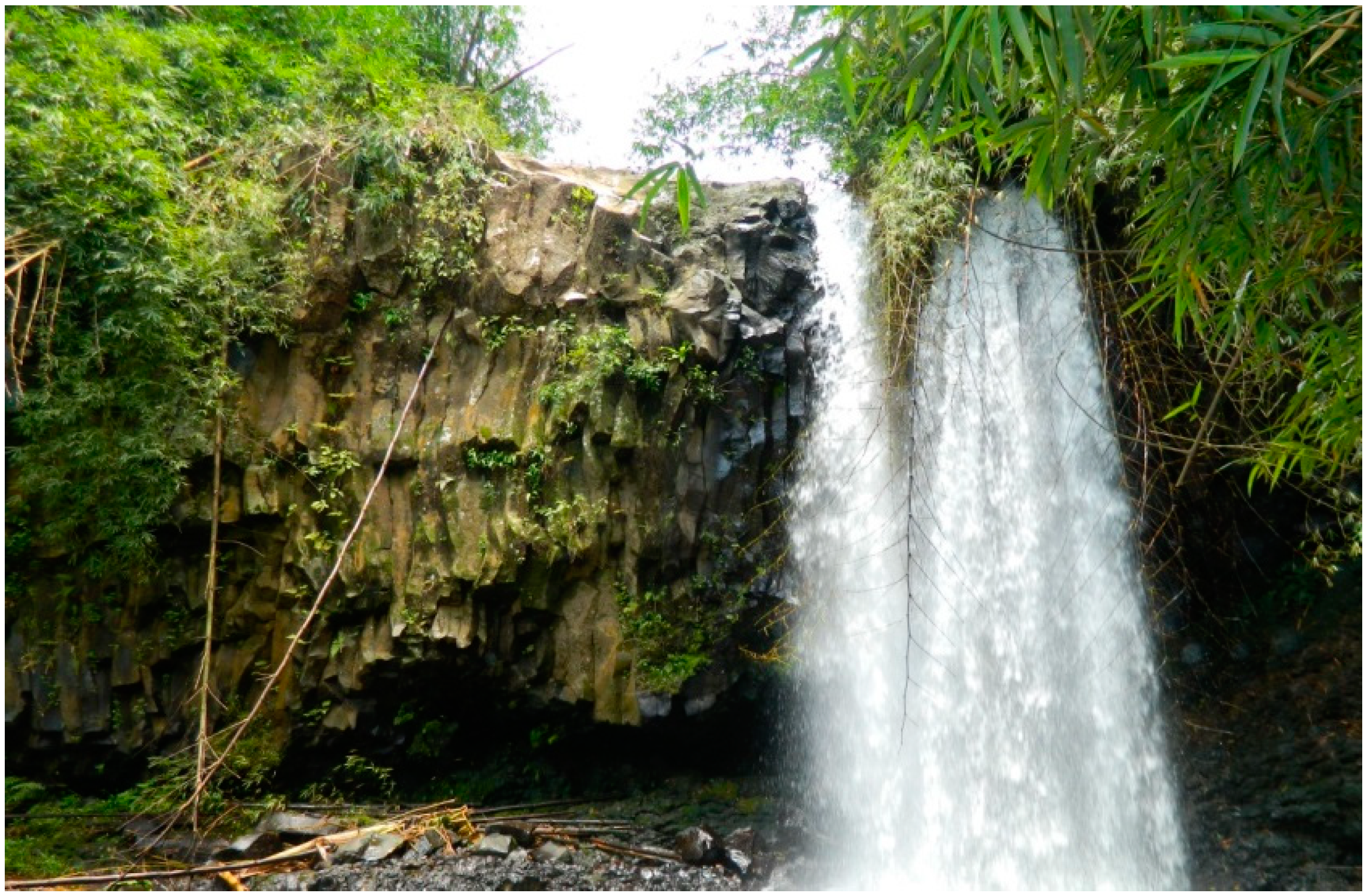
3.2. Boca do Inferno

3.3. Pico do Cão Grande
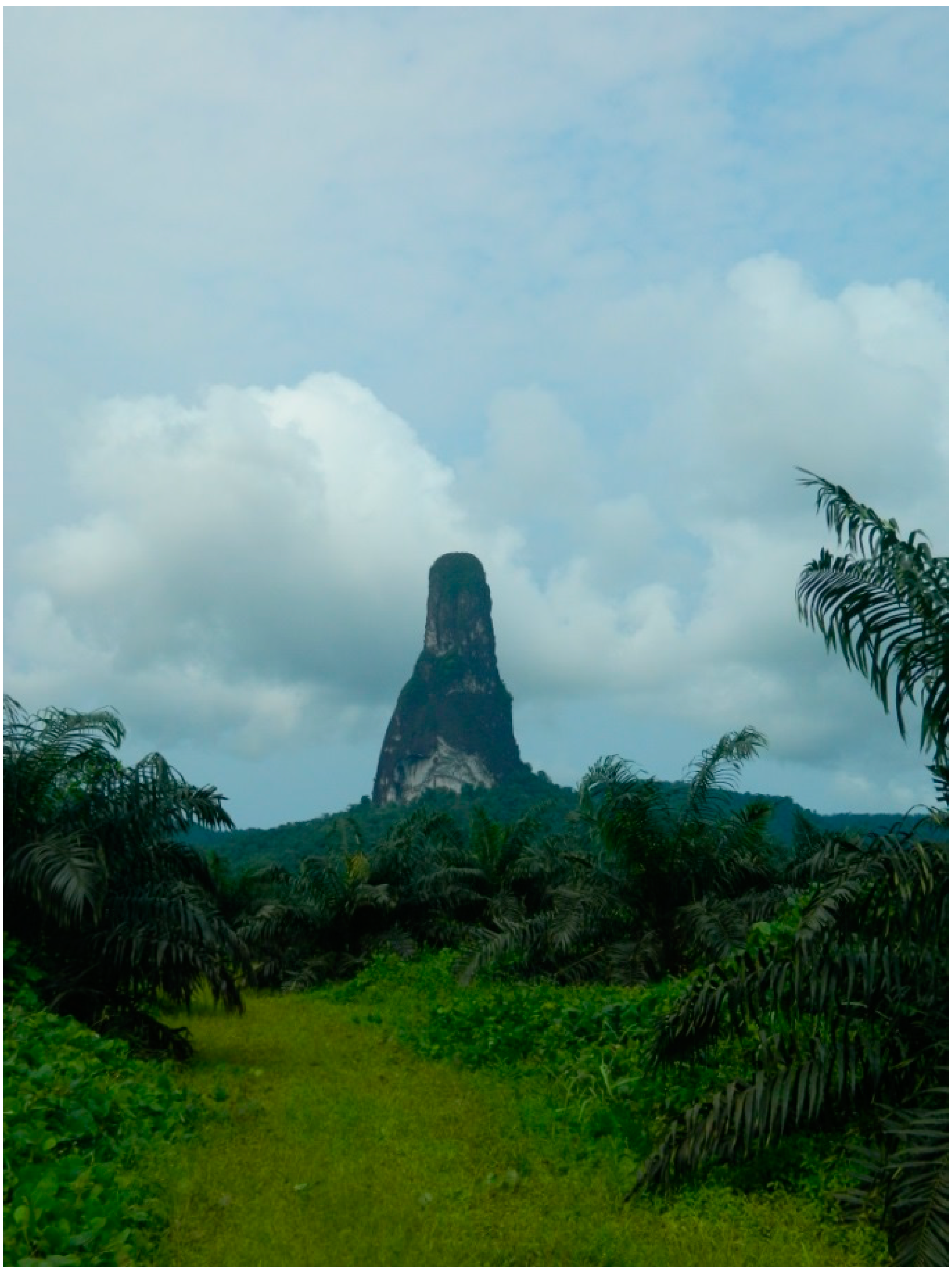
3.4. Lagoa Azul
3.5. Nascente Queluz
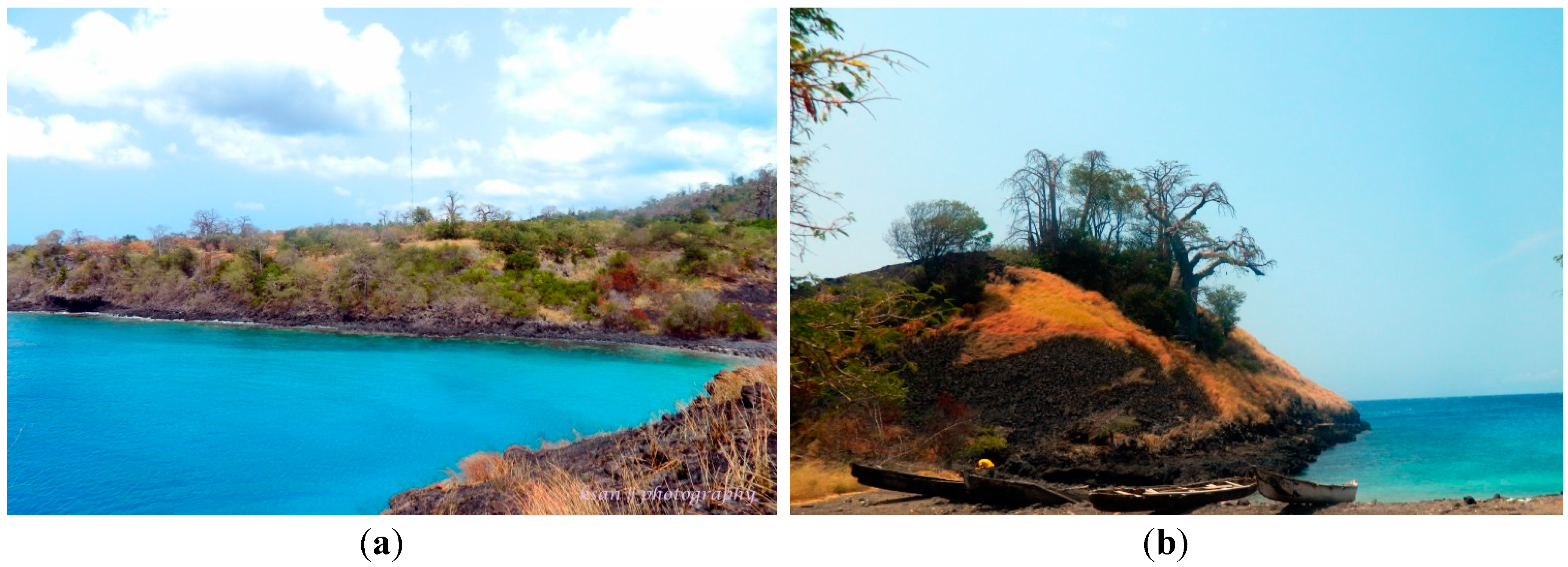
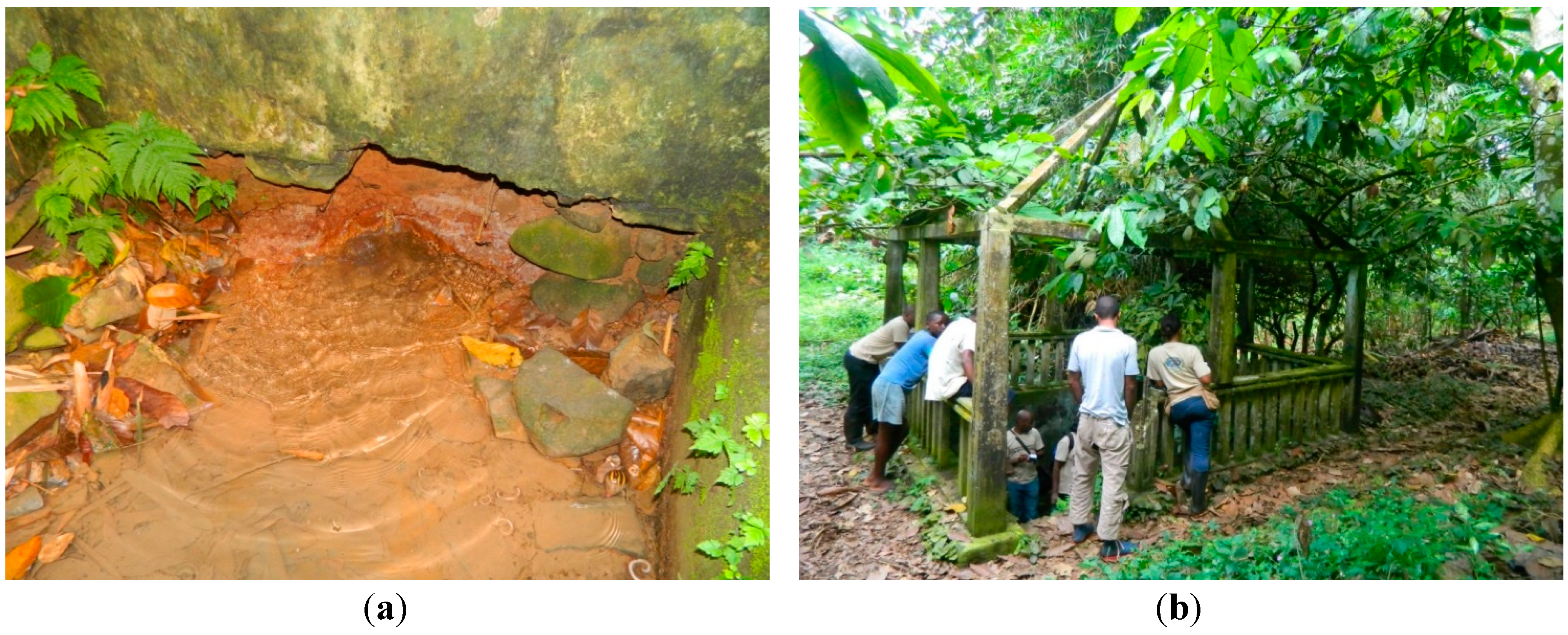
3.6. Lagoa Amélia
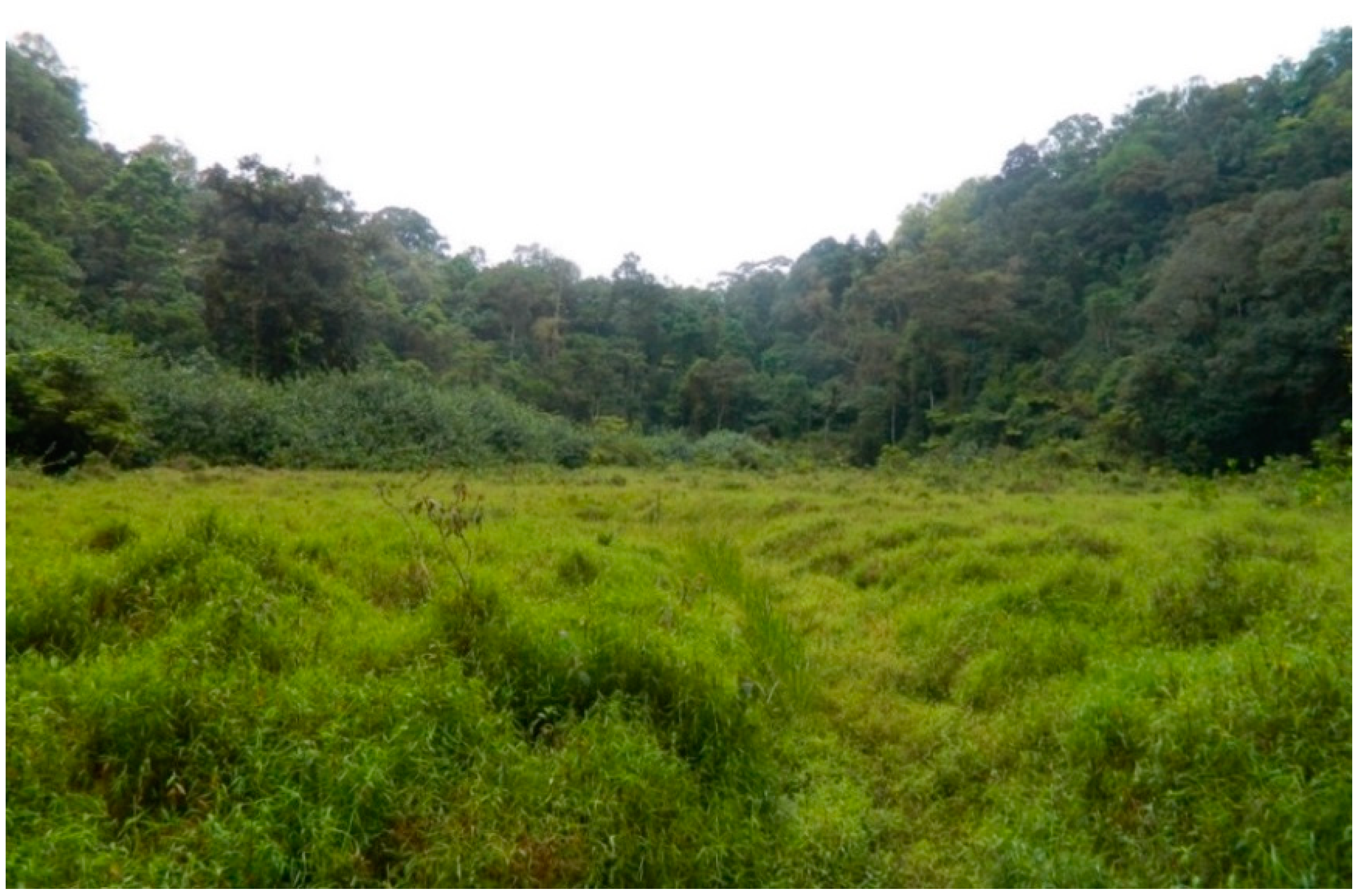
3.7. Ilhéu das Rolas
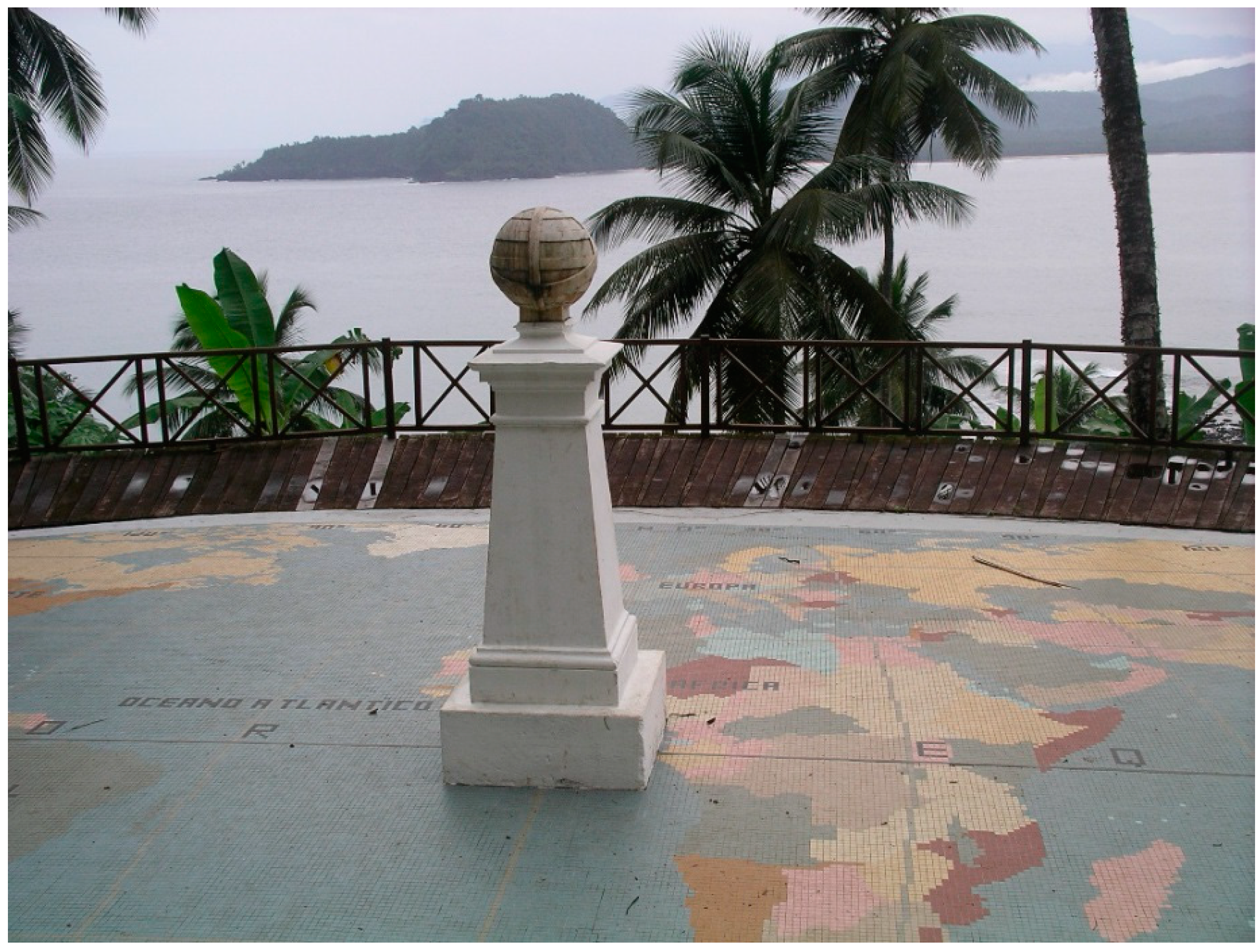
3.8. Túnel de Santa Catarina

3.9. Ilhéu das Cabras
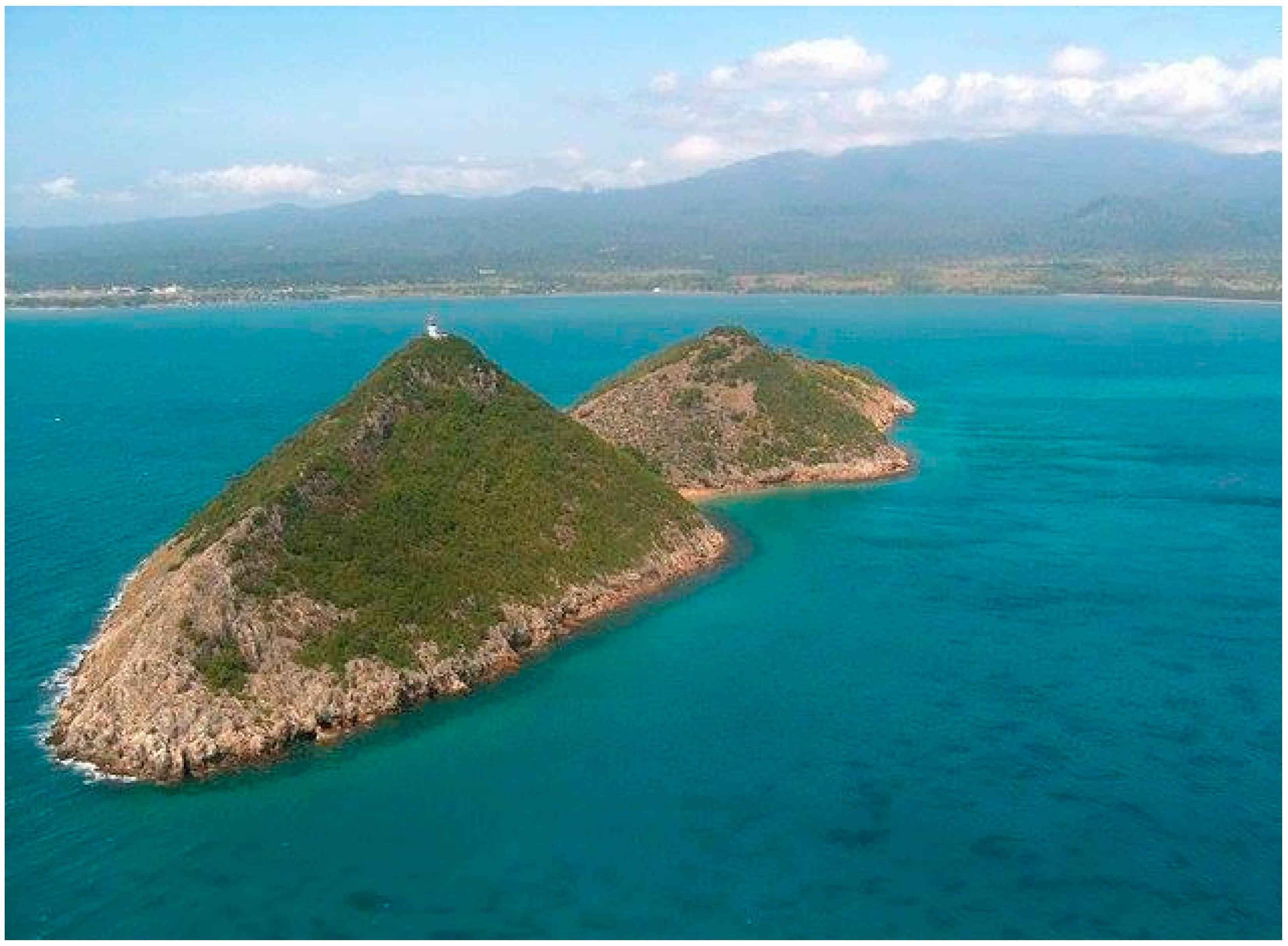
3.10. Pico de São Tomé
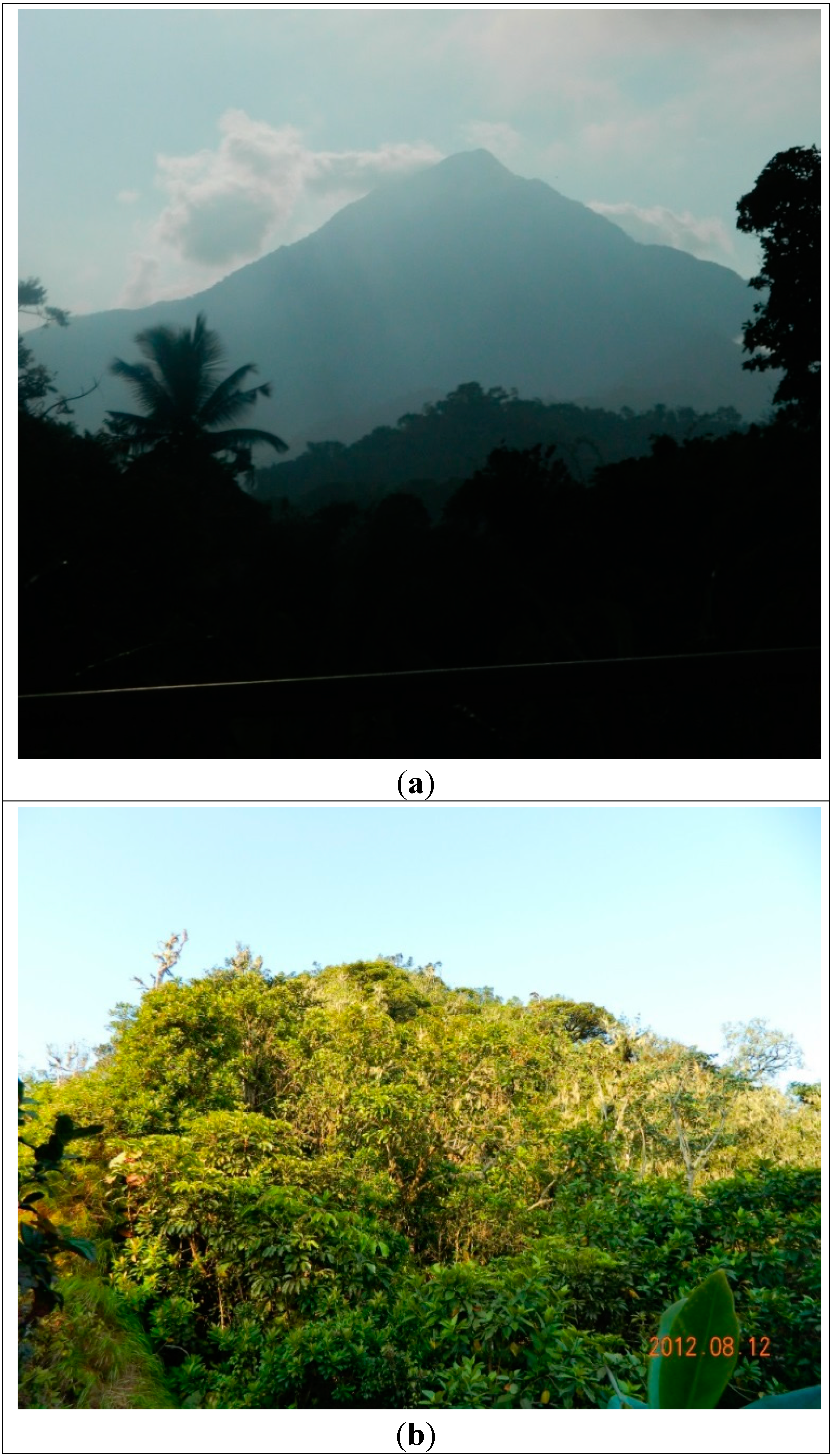
3.11. Qualitative Evaluation of the São Tomé Geoheritage
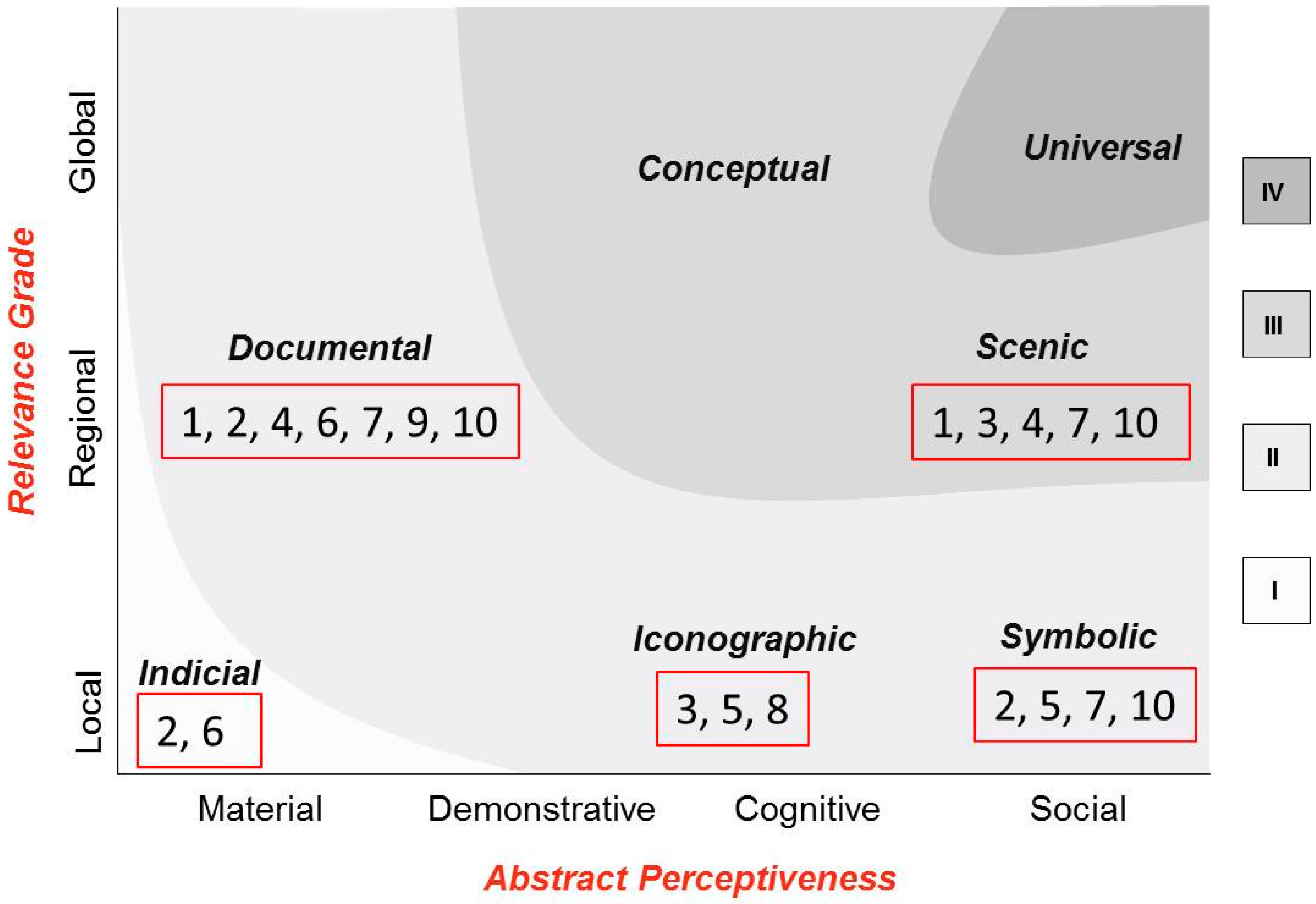
| Geosite | Geoheritage Contents | Qualitative Assessment | Geoconservation Priority |
|---|---|---|---|
| Documental | Rank II | 2nd |
| Scenic | Rank III | ||
| Indicial | Rank I | 2nd |
| Documental | Rank II | ||
| Symbolic | Rank II | ||
| Iconographic | Rank II | 2nd |
| Scenic | Rank III | ||
| Documental | Rank II | 2nd |
| Scenic | Rank III | ||
| Iconographic | Rank II | 3rd |
| Symbolic | Rank II | ||
| Indicial | Rank I | 3rd |
| Documental | Rank II | ||
| Documental | Rank II | 1st |
| Symbolic | Rank II | ||
| Scenic | Rank III | ||
| Iconographic | Rank II | 4th |
| Documental | Rank II | 4th |
| Documental | Rank II | 1st |
| Symbolic | Rank II | ||
| Scenic | Rank III |
3.12. Geotourism Potential of São Tomé
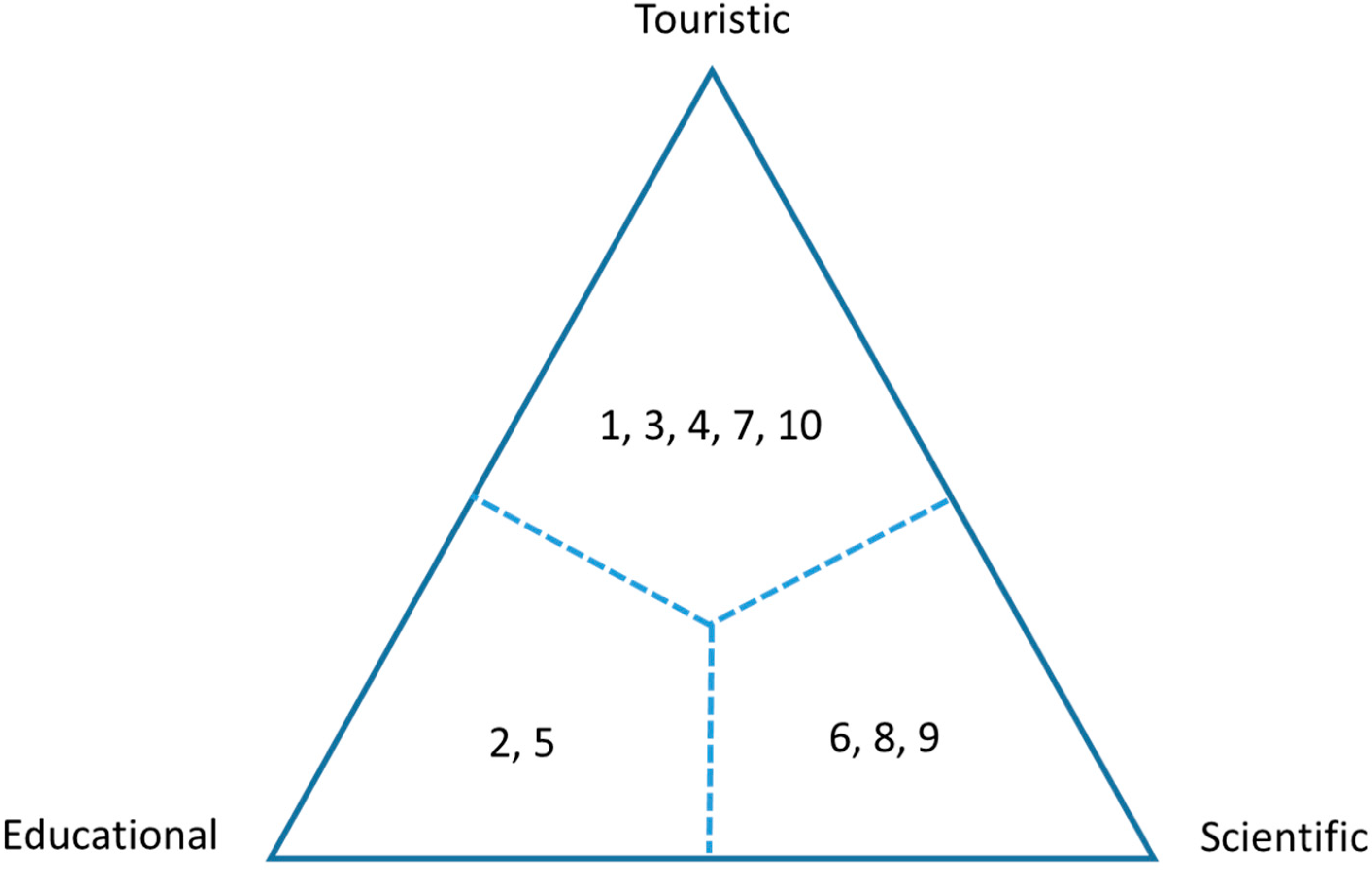
4. Conclusions
Author Contributions
Conflicts of Interest
References
- Fitton, J.G.; Dunlop, H.M. The Cameroon Line, West Africa and its bearing on the origin of oceanic and continental alkali basalt. Earth Planet. Sci. Lett. 1985, 72, 23–38. [Google Scholar] [CrossRef]
- Fitton, J.G. The Cameroon Line, West Africa: A comparison between oceanic and continental alkaline volcanism. In Alkaline Igneous Rocks; Fitton, J.G., Upton, B.G.J., Eds.; Geological Society Special Publication: London, UK, 1987; Volume 30, pp. 273–291. [Google Scholar]
- Toteu, S.F.; Anderson, J.M.; de Wit, M. “Africa Alive Corridors”: Forging a new future for the people of Africa by the people of Africa. J. Afr. Earth Sci. 2010, 58, 692–715. [Google Scholar] [CrossRef]
- Tefogoum, G.Z.; Dongmo, A.K.; Nkouathio, D.G.; Wandji, P.; Dedzo, M.G. Geomorphological features of the Manengouba Volcano (Cameroon Line): Assets for potential geopark development. Geoheritage 2014, 6, 225–239. [Google Scholar] [CrossRef]
- Dowling, R.K. Geotourism’s Global Growth. Geoheritage 2012, 3, 1–13. [Google Scholar] [CrossRef]
- Reimold, W.U. Geoconservation—A southern African and African perspective. J. Afr. Earth Sci. 1999, 29, 469–483. [Google Scholar] [CrossRef]
- Henriques, M.H. Jurassic Heritage of Portugal: State of the art and open problems. Riv. Ital. Paleontol. Stratigr. 2004, 110, 389–392. [Google Scholar]
- UNESCO. Natural Sciences. Environment. Ecological Sciences. Biosphere Reserves. Sao Tome and Principe. Available online: http://www.unesco.org/new/en/natural-sciences/environment/ecological-sciences/biosphere-reserves/africa/sao-tome-and-principe/the-island-of-principe/ (accessed on 13 October 2014).
- Jones, P.J. Biodiversity in the Gulf of Guinea. Biodivers. Conserv. 1994, 3, 772–784. [Google Scholar] [CrossRef]
- Peet, N.B.; Atkinson, P.W. The biodiversity and conservation of the birds of São Tomé and Príncipe. Biodivers. Conserv. 1994, 3, 851–867. [Google Scholar] [CrossRef]
- Dowling, R.K. Geotourism Global Grow. Geoheritage 2011, 3, 1–13. [Google Scholar] [CrossRef]
- Henriques, M.H.; Pena dos Reis, R.; Brilha, J.; Mota, T. Geoconservation as an Emerging Geoscience. Geoheritage 2011, 3, 117–128. [Google Scholar] [CrossRef]
- Panizza, M. Geomorphosites: Concepts, methods and examples of geomorphological survey. Chin. Sci. Bull. 2001, 46, 4–5. [Google Scholar] [CrossRef]
- Martínez-Frías, J.; Mogessie, A. The need for a geoscience education roadmap for Africa. Episodes 2012, 35, 489–492. [Google Scholar]
- Henriques, M.H.; Andrade, A.I.S.; Lopes, F.C. The Earth Sciences among the Community of Portuguese-Speaking countries and the future of Gondwana. Episodes 2013, 36, 255–262. [Google Scholar]
- Njonfang, E.; Nono, A.; Kamgang, P.; Ngak, V.; Tchoua, F.M. Cameroon Line alkaline magmatism (Central Africa): A reappraisal. Geol. Soc. Am. Spec. Paper 2011, 478, 173–191. [Google Scholar]
- Halliday, A.N.; Dickin, A.P.; Fallick, A.E.; Fitton, J.G. Mantle Dynamics: A Nd, Sr, Pb and O isotopic study of the Cameroon Line Volcanic Chain. J. Petrol. 1988, 29, 181–211. [Google Scholar] [CrossRef]
- Munhá, J.M.; Afonso, R.S.; Caldeira, R.; Mata, J. Estudo geológico preliminar da Região Nordeste da ilha de S. Tomé (folha no. 2—Ana Chaves). Garcia Orta-Sér. Geol. 2002, 18, 1–8. [Google Scholar]
- Caldeira, R.; Munhá, J.M. Petrology of ultramafic nodules from São Tomé Island, Cameroon Volcanic Line (oceanic sector). J. Afr. Earth Sci. 2002, 34, 231–246. [Google Scholar] [CrossRef]
- Caldeira, R.; Madeira, J.; Munhá, J.M.; Afonso, R.S.; Mata, J.; Tassinari, C.C.; Nascimento, E. Caracterização das principais unidades volcano-estratigráficas da ilha de São Tomé, Golfo da Guiné. Available online: http://socgeol.org/documents/vi-congresso-nacional-de-geologia-caparica-2003 (accessed on 5 January 2015).
- Aka, F.T.; Nagao, K.; Kusakabe, M.; Sumino, H.; Tanyileke, G.; Ateba, B.; Hell, J. Symmetrical Helium isotope distribution on the Cameroon Volcanic Line, West Africa. Chem. Geol. 2004, 203, 205–223. [Google Scholar] [CrossRef]
- Fassoulas, C.; Mouriki, D.; Dimitriou-Nikolakis, P.; Iliopoulos, G. Quantitative Assessment of Geotopes as an Effective Tool for Geoheritage Management. Geoheritage 2012, 4, 177–193. [Google Scholar] [CrossRef]
- Reynard, E.; Coratza, P. Scientific research on geomorphosites. A review of the activities of the IAG working group on geomorphosites over the last twelve years. Geogr. Fis. Dinam. Quat. 2013, 36, 159–168. [Google Scholar]
- Pena dos Reis, R.; Henriques, M.H. Approaching an Integrated Qualification and Evaluation System for Geological Heritage. Geoheritage 2009, 1, 1–10. [Google Scholar] [CrossRef]
- Henriques, M.H.; Tavares, A.O.; Bala, A.L.M. The geological heritage of Tundavala (Angola): An integrated approach to its characterization. J. Afr. Earth Sci. 2013, 88, 62–71. [Google Scholar] [CrossRef]
- Mesterházy, A.; Browning, J. A rare enigmatic sedge rediscovered: Principina grandis (Cyperaceae) newly recorded from São Tomé. Kew Bull. 2014, 69, 1–4. [Google Scholar] [CrossRef]
- Lachaise, D.; Chassagnard, M.-T. Divergence of sex comb phenotypes in the Drosophila fima species group and radiation on Afrotropical Ficus, including five new species from East Africa and Madagascar (Diptera: Drosophilidae). Ann. Soc. Entomol. Fr. 2002, 38, 79–99. [Google Scholar]
- Csuzdi, C. Earthworms (Annelida: Oligochaeta) of Sao Tomé. J. Nat. Hist. 2005, 39, 3039–3058. [Google Scholar] [CrossRef]
- Enroth, J.; Shevock, J.R. Porotrichum saotomense sp. nov. (Neckeraceae) and other additions to the moss flora of São Tomé & Príncipe, Gulf of Guinea, West Africa. Trop. Bryol. 2011, 33, 6–11. [Google Scholar]
- Russoa, D.; Maglioc, G.; Rainhod, A.; Meyerd, C.F.J.; Palmeirimd, J.M. Out of the dark: Diurnal activity in the bat Hipposideros ruber on São Tomé Island (West Africa). Mamm. Biol. Z. Säugetierkd. 2001, 76, 701–708. [Google Scholar] [CrossRef]
- Aka, F.T.; Kusakabe, M.; Nagao, K.; Tanyileke, G. Noble gas isotopic compositions and water/gas chemistry of soda springs from the islands of Bioko, São Tomé and Annobon, along with Cameroon Volcanic Line, West Africa. Appl. Geochem. 2001, 16, 323–338. [Google Scholar] [CrossRef]
- Brilha, J. Património Geológico e Geoconservação. A Conservação da Natureza na sua Vertente Geológica; Palimage: Braga, Portugal, 2005; pp. 1–183. [Google Scholar]
- Pestana Hotels and Resorts. Available online: http://www.pestana.com/pt/institucional/sustentabilidade/responsabilidade-social/africa/pages/outras-accoes.aspx (accessed on 23 October 2014).
- Obo Natural Parks. Available online: http://www.obopark.com/en/saotomeprincipe/nationalparks.html (accessed on 23 October 2014).
- Henriques, M.H.; Tomaz, C.; Sá, A. The Arouca Geopark (Portugal) as an educational resource: A case study. Episodes 2012, 35, 481–488. [Google Scholar]
- Becker, K. São Tomé and Príncipe; The Bradt Travel Guides: Bucks, UK, 2008; pp. 1–232. [Google Scholar]
- Warne, S. Gabon, São Tomé and Príncipe; The Bradt Travel Guides: Bucks, UK, 2003; pp. 1–244. [Google Scholar]
- Brilha, J. Geoconservation and protected areas. Environ. Conserv. 2002, 29, 273–276. [Google Scholar]
- Brito, B.R. Turismo em meio insular africano: Análise comparativa de impactos. Tourism in the African insular environment: A comparative analysis of impacts. Ambient. MENTE Sustentable 2010, I, 157–177. [Google Scholar]
- Hose, T. 3 G’s for modern geotourism. Geoheritage 2012, 4, 7–24. [Google Scholar] [CrossRef]
- World Food Programme. São Tomé and Principe. Available online: https://www.wfp.org/countries/s%C3%A3o-tom%C3%A9-and-principe/overview (accessed on 23 October 2014).
- Newsome, D.; Johnson, C.P. Potential Geotourism and the Prospect of Raising Awareness About Geoheritage and Environment on Mauritius. Geoheritage 2013, 5, 1–9. [Google Scholar] [CrossRef]
- Bruno, D.E.; Crowley, B.E.; Gutak, J.M.; Moroni, A.; Nazarenko, O.V.; Oheim, K.B.; Ruban, D.A.; Tiess, G.; Zorina, S.O. Paleogeography as geological heritage: Developing geosite classification. Earth-Sci. Rev. 2014, 138, 300–312. [Google Scholar] [CrossRef]
- Oliveira, M; Santos, O. Património Natural de São Tomé e Príncipe. Conhecer Para Preservar...; Instituto Marquês de Valle Flôr: Leiria, Portugal, 2013; pp. 1–12. [Google Scholar]
- UNESCO World Heritage Centre. World Heritage List Statistics. Number of World Heritage Properties by Region. Available online: http://whc.unesco.org/en/list/stat#d1 (accessed on 20 November 2014).
- Arouca Declaration. International Congress Arouca 2011. Geotourism in Action. Available online: https://dl.dropboxusercontent.com/u/36358978/News/Declaration_Arouca_%5BEN%5D.pdf (accessed on 24 November 2014).
- De Wit, M.J.; Anderson, J.M. Gondwana Alive Corridors: Extending Gondwana Research to Incorporate Stemming the Sixth Extinction. Gondwana Res. 2003, 6, 369–408. [Google Scholar] [CrossRef]
© 2015 by the authors; licensee MDPI, Basel, Switzerland. This article is an open access article distributed under the terms and conditions of the Creative Commons Attribution license (http://creativecommons.org/licenses/by/4.0/).
Share and Cite
Henriques, M.H.; Neto, K. Geoheritage at the Equator: Selected Geosites of São Tomé Island (Cameron Line, Central Africa). Sustainability 2015, 7, 648-667. https://doi.org/10.3390/su7010648
Henriques MH, Neto K. Geoheritage at the Equator: Selected Geosites of São Tomé Island (Cameron Line, Central Africa). Sustainability. 2015; 7(1):648-667. https://doi.org/10.3390/su7010648
Chicago/Turabian StyleHenriques, Maria Helena, and Keynesménio Neto. 2015. "Geoheritage at the Equator: Selected Geosites of São Tomé Island (Cameron Line, Central Africa)" Sustainability 7, no. 1: 648-667. https://doi.org/10.3390/su7010648
APA StyleHenriques, M. H., & Neto, K. (2015). Geoheritage at the Equator: Selected Geosites of São Tomé Island (Cameron Line, Central Africa). Sustainability, 7(1), 648-667. https://doi.org/10.3390/su7010648






